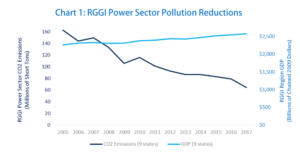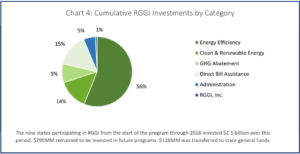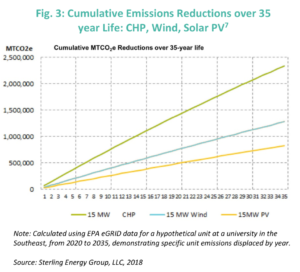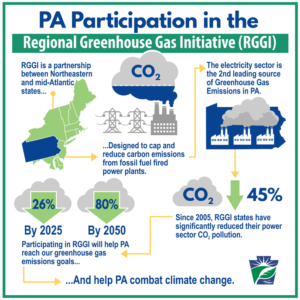By Celia Lane, Climate and Clean Energy Intern, in collaboration with Lynn A. Kirshbaum, Deputy Director of the Combined Heat and Power Alliance
Across the country, states are signing onto emissions reductions programs to support their climate goals, create resilient jobs, improve public health outcomes, and drive sustainable economic recovery. The Regional Greenhouse Gas Initiative (RGGI) is one such voluntary program that can broaden state support and funding for combined heat and power (CHP) systems. The Combined Heat and Power Alliance encourages states to join RGGI and use funds to invest in CHP to reduce greenhouse gas emissions and boost resilience.

Source: NRDC
RGGI is a cap and trade program in which participating states set a regional cap on CO2 emissions from the power sector and then issue CO2 allowances to power generators in amounts equal to their CO2 emissions. These CO2 allowances are distributed at quarterly, regional auctions or are traded in secondary markets. The RGGI cap represents the regional budget for CO2 emissions from the power sector, and it declines each year. This market-based approach allows for the most efficient and cost-effective emissions reductions within participating states.

Source: https://www.rggi.org/sites/default/files/Uploads/Proceeds/RGGI_Proceeds_Report_2017.pdf
Beyond the emissions reductions from capping CO2 in the power sector, RGGI spurs innovation in the clean energy economy and creates green jobs by returning auction proceeds to participating states for reinvestment in energy efficiency (EE) and clean energy programs. Each state decides how to invest the proceeds based on their own strategic priorities and circumstances, but the majority of funding is invested in EE since it provides the most significant economic return per dollar invested. Proceeds are also invested in greenhouse gas (GHG) abatement, green jobs training, climate resilience, administration, and CHP infrastructure.

Although CHP is not a zero-carbon technology, it can effectively make use of more than 70 percent of fuel inputs to generate both heat and electricity, lowering emissions and increasing overall fuel efficiency. Because of CHP’s low emission rate and high capacity factor, it would take aa 15-megawatt solar plant 35 years to achieve the same reductions that a 15-megawatt CHP plant can achieve in only 11 years of operation. CHP systems can also further reduce GHG emissions by utilizing renewable fuels such as biomass (e.g., forest and crop residues, wood waste, food-processing residue) or biogas (e.g., manure biogas, wastewater treatment biogas, landfill gas), and are easily adaptable to do so.

As several states have already demonstrated, CHP is a viable option for RGGI spending. With their proceeds, Delaware has funded the Delaware Energy Efficiency Investment Fund (EEIF) which provides financial incentives to businesses, local governments, and non-profits to implement on-site EE upgrades such as CHP. Similarly, Maryland uses their RGGI proceeds to fund a CHP Grant Program which targets eligible commercial, industrial, institutional, and critical infrastructure facilities including healthcare, wastewater treatment and government facilities. In FY16, Maryland installed 16.5 MW of CHP capacity through their RGGI-funded grant program.
RGGI membership is expanding. Connecticut, Delaware, Maine, Maryland, Massachusetts, New Hampshire, New Jersey, New York, Rhode Island, Vermont, and now Virginia have all signed on to the cooperative effort to reduce GHG emissions from the power sector and promote energy efficiency. The Pennsylvania state legislature is currently debating whether or not to sign onto RGGI after Governor Wolf signed an executive order directing their Department of the Environment (DEP) to begin the rulemaking process required to join.

Source: https://www.dep.pa.gov/Citizens/climate/Pages/RGGI.aspx
States have an opportunity to become more resilient to changing environmental and economic conditions by joining market-based emissions reductions programs like RGGI and investing in CHP and other energy efficiency technologies.
